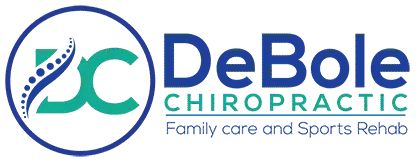
Sciatica refers to nerve pain from an injury or irritation of the sciatic nerve. It originates from the lower back and usually runs through the buttocks into the legs and feet. Depending on the severity, it can range from mildly uncomfortable to debilitating. A person with sciatica may experience pain, tingling, burning, numbness, or discomfort in their legs and buttocks and may even have weakness or loss of function in their lower body.
The sciatic nerve is the body's longest and thickest nerve. It travels down the back of the leg and ends just below the knee on either side of the body. There are five nerve roots in the lower back - two originating from the lumbar spine and three from the sacrum - which join together into a single nerve deep in the buttock. Other nerves branch off the sciatic nerve and travel down the lower leg into the foot and toes.
Depending on the underlying cause of sciatica, treatment can vary. Some doctors may recommend medications or surgery, while other patients will benefit from physical therapy, chiropractic, or massage to help ease pain and inflammation and restore strength in their legs.
When it comes to treating sciatica, it’s essential to consider all of your options. While some treatments may work better for you than others, the best treatment option may change over time. Knowing what treatments are available will only help you in your recovery.
What Causes Sciatica?
Sciatica can be caused by a number of issues ranging from severe injury to lifestyle habits. Essentially, anything that causes compression or irritation of the sciatic nerve can result in inflammation, numbness, and pain associated with sciatica.
- The most common cause of sciatica is a herniated or bulging disc. Through a weakness in the outer wall of the disc, pressure from the vertebrae can cause the gel-like core of the disc to swell (bulge) or break through the outer membrane of the disc (herniate) and press up against the nerve root.
- Degenerative Disc Disease is the natural deterioration of the discs between the vertebrae and is very common with aging. When the discs dry out over time, they become brittle, and herniation becomes much more common. Additionally, if disc height decreases, the vertebrae become closer together, resulting in shorter neural pathways that can pinch the sciatic nerve roots along the spine.
- Spondylolisthesis is the misalignment of one vertebra with the one above it, limiting the opening through which the nerve leaves. When vertebrae compress, the sciatic nerve is at risk of being pinched.
- The abnormal narrowing of the spaces within the spinal canal is known as spinal stenosis. The space available for the spinal cord and nerves to pass through is reduced, leading to the sciatic nerve's compression when stenosis occurs in the lumbar spine.
- Piriformis Syndrome is when the piriformis muscle tightens, spasms, or cramps for various reasons, causing pain in the hip, buttock, and back of the leg. Because this muscle runs from the thighbone, over the sciatic nerve, and into the pelvis, cramping or spasming of the piriformis can irritate the sciatic nerve and cause sciatica.
- Accident or trauma to the lumbar spine, the sciatic nerve itself, or to surrounding bones and muscles can irritate the sciatic nerve. Injuries from contact sports, car accidents, and even slips and falls are most common.
- Changes in the body due to pregnancy and childbirth can put pressure on the sciatic nerve leading to sciatica.
- Other less obvious causes of sciatica include obesity, diabetes, bone spurs or tumors on the spine, endometriosis, constipation, and even regularly sitting on your wallet in a back pocket.
What Are the Symptoms of Sciatica?
Common sciatica symptoms include moderate to intense pain that starts at the lower back and extends to the foot, sharp pains or tingling anywhere along the back of the leg, buttock, lower back, and ankle, and pain with movement.
More severe symptoms include nerve-related sensations such as sharp shock-like pains, numbness, and weakness in the buttock or down the back of the leg. If left untreated, weakness and nerve damage can result in permanent nerve damage, loss of feeling in the leg and buttock, and inability to control the bowel and bladder.
Treatment for Sciatica Pain
In some instances, sciatica can resolve itself with minimal treatment, depending on the cause and severity. A few things you can do at home to help relieve sciatica pain are:
- Gentle exercise that doesn’t exacerbate the pain, such as going for a walk or doing mild core strengthening
- Alternating heat and cold therapy by applying cold packs for 15 minutes every hour and heat for 15 minutes every two to three hours
- Gentle stretching to improve spinal mobility
- Over-the-counter, non-steroidal, anti-inflammatory drugs can help reduce inflammation and pain (consult your doctor before taking NSAIDs)
- Being conscious of your posture, changing positions regularly, or taking a break from aggravating activities
If these don’t seem to help, pain is severe or seems nerve-related, you have a known injury causing your sciatica, or if the pain lasts for more than two weeks, then it’s best to consult a doctor for more help.
Depending on the severity of your sciatica, there are several treatments your doctor might recommend:
- Prescription medications such as painkillers and muscle relaxants
- Physical therapy to strengthen muscles and reduce inflammation
- Spinal injections of cortisone or other steroid medications into the epidural space
- Spinal surgery - microdiscectomy or laminectomy to alleviate compression in the spinal column
- Chiropractic adjustments can help to realign any misaligned vertebrae and relieve nerve irritability that might be caused by restricted spinal movement
- Alternative therapies like acupuncture and massage
What’s the Best Treatment for Sciatic Nerve Pain?
The most effective treatment option for you will depend on what is causing your sciatic nerve pain, how long it has been going on, and how much it’s affecting your life. For example, someone with a sports-related injury that is causing sciatica may benefit from physical therapy. Meanwhile, someone with a herniated disc who has not seen improvement from other measures might see significant relief from chiropractic xanax treatments before resorting to surgery.
Chiropractic care is now proven as an effective treatment for sciatica and offers a natural, holistic approach. Chiropractors employ a variety of non-invasive techniques to address spinal misalignment and other issues related to sciatic nerve pain.
Using spinal manipulation and other manual therapies, a chiropractor can perform adjustments and exercises designed to support your body’s natural healing process so that you can get back on track faster than traditional treatments allow. Additionally, chiropractic methods can cost much less than surgical procedures while producing equally positive results.
If you’re looking for a natural, non-invasive treatment for sciatica, chiropractic care might be the best option for you.
Find Sciatica Relief with Debole Chiropractic
At DeBole Chiropractic, our goal is to help our patients maintain optimal spinal health and live an active, pain-free lifestyle. If you’re suffering from sciatica, we want to help you gain your life back. We embrace the latest technology in chiropractic care and a holistic approach to healing from injuries to achieve that goal.
Combining chiropractic treatment with spinal rehab, we treat the body from the inside out. Based in the Victor, NY area, our family-friendly team of chiropractors provides personalized treatment for each of our patients.
If you’re considering visiting a chiropractor for the first time, we invite you to visit DeBole Chiropractic today to learn about the power of chiropractic care phentermine to heal the body.

